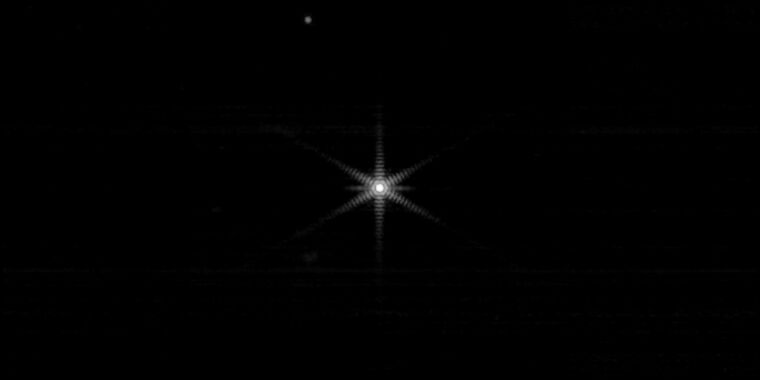
NASA today shared an image indicating it had successfully completed the image alignment phase of the James Webb Space Telescope’s commissioning. The Webb’s primary mirror is made up of 18 separate segments, and as of today’s update, all those segments are aligned so that a single star appears as a single object. Although a number of focusing steps are still required, the road to commissioning the telescope is getting shorter and shorter.
Immediately after launch, the focus was on unfolding all of the telescope’s parts that needed to be kept in a compact configuration to fit into the launch vehicle. This process involved reorienting and extending the primary mirror, lowering the secondary mirror into place, and stretching the multilayer sunshade that helps keep the imaging hardware cold.
To the surprise and delight of many people, it all went incredibly smoothly. Since then, the focus has shifted to… well, focus. The Webb’s primary mirror consists of 18 individual mirrors in a hexagonal array, each of which can be controlled individually. Initially, when the mirror was first unfolded, these produced 18 individual smears spread over the secondary mirror.
However, earlier this month, tweaks to the mirrors created a hexagonal array of smears that replicated the arrangement of the primary mirror segments. In today’s announcement, the segments were shifted so that each of the swabs was partially focused and moved to the center of the secondary mirror. The result? The star imaged for this process is now a single dot in the center of the telescope’s field of view.
However, NASA isn’t done yet. Although all the images are in the same place, they are simply superimposed there. The ultimate goal is to make the segments behave like a single mirror, requiring more careful focus. To do this, engineers will image the spectra of the light, looking for small shifts of the image locations at different wavelengths. From this it can be deduced how the mirrors should be shifted to fine-tune the mirror segments.

